Showing 289–300 of 1187 results

This is the sixth monograph in the series Man and Forest and the second volume to deal with an Aboriginal tribe of Orissa. The authors, after ten years of intensive research, give an account of how the Kuttia Kondh, a tribal community in transition, classify the components of nature, and of their social organisation, religious beliefs, etc.
In the management of renewable resources, forests have undeniably a vital role, and today, as never before, their conservation is an urgency. In view of this dire necessity the series Man and Forest tries to highlight the relevance of indigenous knowledge of various South Asian tribal communities in the sustainable management of forests/local resources more specially against the growing challenges of economic development vis-a-vis environmental hazards and a rapidly declining resource base. A scientific inquiry into indigenous knowledge is an effort to discover/rediscover the tribals traditional modes of production and conservation. For them it is the only source to cope with the problems of modernity affecting their lives and precarious environments. Forest Tribes of Orissa: The Kuttia Kondh is the sixth monograph in the series Man and Forest and, after the publication of an account of the forest world of the Dongaria Kondh in 2002, the second volume to deal with an aboriginal tribe of Orissa. Being a tribal community in transition, the authors have tried to document and thus safeguard its local traditional knowledge of conservation, use and management of forests and natural resources. They give an account of how the Kuttia Kondh classify trees and other plants, hills, forests, crops and animals. Their subsistence economy, agricultural system, social organization, religious beliefs and other important socio-cultural aspects of forest life have been extensively treated. The lifestyle of this tribal community is finally reflected on the background of forest policy and the impact it has on their livelihood. The present book is, as most of the volumes in the series, the outcome of nearly ten years research venture involving an interdisciplinary, intercultural team of sociologists, ethnobotanists, social anthropologists and other social scientists.
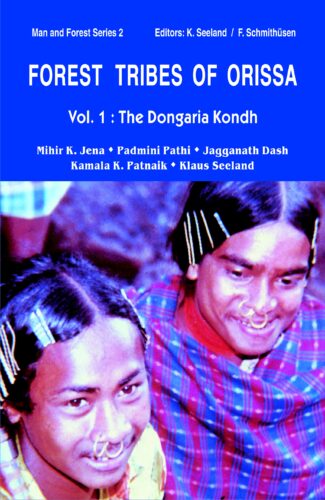
The study documents the Dongaria Kondh tribal communitys traditional knowledge of their natural environment: how they classify trees, plants, hills, forests, crops and soils and how they have been managing their forests. Meticulously delineated are the Dongarias geographical landscape, economy, socio-political organisation, oral traditions and other socio-cultural aspects.
In the management of renewable resources, forests have undeniably a vital role and today, as never before, their conservation is an urgency. In view of this dire necessity, the series Man and Forest tries to highlight the relevance of indigenous knowledge of various South Asian tribal communities in the sustainable management of forests/local resources more specially against the growing challenges of economic development vis-a-vis environmental hazards and a rapidly declining resource base. A scientific inquiry into indigenous knowledge is an effort to discover/ rediscover the tribals traditional modes of production and conservation. For them it is the only source to cope with the problems of modernity affecting their lives and precarious environments. Forest Tribes of Orissa: The Dongaria Kondh is the second book in the series of monographs of Man and Forest, and the first focussing on a tribal community today caught in the transition between an autochthonous lifestyle and fragments of modernity. The authors attempt to document the Dongarias traditional knowledge of their natural environment; how they classify trees, plants, hills, forests, crops, and soils; and how so far they have been managing their forests. Also meticulously delineated, as a backdrop to this study, are the Dongarias geographical landscape, economy, socio-political organisation, oral traditions, belief cosmos, and other relevant socio-cultural aspects. The present book is, as most of the volumes in the series, the outcome of nearly ten-years research venture involving an interdisciplinary, intercultural team of sociologists, ethnobotanists, social anthropologists and other social scientists.
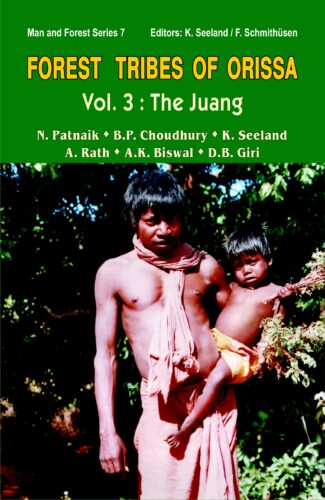
The authors have tried to document and safeguard the local traditional knowledge of conservation, use and management of forests and natural resources of the Juangs, a tribal community of Orissa. Their subsistence economy, agricultural system, social organization, religious beliefs and other important socio-cultural aspects of forest life have been extensively treated.
In the management of renewable resources, forests have undeniably a vital role, and today, as never before, their conservation is an urgency. In view of this dire necessity the series Man and Forest tries to highlight the relevance of indigenous knowledge of various South Asian tribal communities in the sustainable management of forests/local resources more specially against the growing challenges of economic development vis-à-vis environmental hazards and a rapidly declining resource base. A scientific inquiry into indigenous knowledge is an effort to discover/rediscover the tribals’ traditional modes of production and conservation. For them it is the only source to cope with the problems of modernity affecting their lives and precarious environments. Forest Tribes of Orissa: The Juang is the seventh monograph in the series Man and Forest and, after the publication of an account of the forest world of the Dongaria Kondh in 2002, and the Kuttia Kondh in 2006. Being a tribal community in transition, the authors have tried to document and thus safeguard its local traditional knowledge of conservation, use and management of forests and natural resources. They give an account of how the Juang classify trees and other plants, hills, forests, crops and animals. Their subsistence economy, agricultural system, social organization, religious beliefs and other important socio-cultural aspects of forest life have been extensively treated. The lifestyle of this tribal community is finally reflected on the background of forest policy and the impact it has on their livelihood. The present book is, as most of the volumes in the series, the outcome of nearly ten years’ research venture involving an interdisciplinary, intercultural team of sociologists, ethnobotanists, and social anthropologists
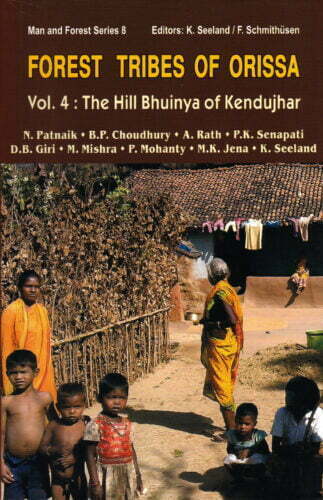
This book is the result of a detailed study on the forest/hill-dwelling tribes of the Bhuinya of the Bhuinyapirh. It helps in understanding how the Bhuinya perceive their ecosystem; how their sociocultural life is interwoven with the forests and other elements of their ecosystem; their management systems for upkeeping it against the backdrop of a considerable depletion of biodiversity during the latter part of the twentieth century.
Forests, a precious renewable resource, are habitats of many aborigines and treasure houses of a large number of flora and fauna. Any distortion to them imbalances the life of their inhabitants. Man and Forest series highlights the relevance of indigenous knowledge systems of various South Asian tribal communities in the sustainable management of local resources/forests. Here comes the importance of making a scientific enquiry into the application of indigenous tribal knowledge in rediscovering their methods of production, consumption and conservation, against the all-pervading impact of modernity and the ever-increasing demand for an unbridled use of natural resources.
This monograph The Hill Bhuinya of Kendujhar is the eighth in the Man and Forest series and fourth in the Forest Tribes of Orissa: Lifestyle and Social Conditions of Selected Orissan Tribes. It helps in understanding how the Bhuinya perceive their ecosystem; how their sociocultural life is interwoven with the forests and other elements of their ecosystem; their management systems for upkeeping it; and the role their indigenous knowledge plays in their production, consumption and conservation practices, against the backdrop of a considerable depletion of biodiversity during the latter part of the twentieth century.
This book is the result of a detailed study on the forest/hill-dwelling tribe of the Bhuinya of Bhuinyapirh in Banspal Block, Kendujhar District, Odisha since 1996 by a team of anthropologists, ethnosociologists, botanists and ethnobotanists. It was critically revised and analysed, using authentic methods due to changes in the state and central government policies, recently.

This book is an effort to highlight the importance of forestry research in India and thus presents a detailed study, critical analyses, strengths and weaknesses of forestry research. Along with many a nuance, it provides suggestions for stregtening and reorientation of forestry research in the country.
Forestry research is a niche segment in India and has yet to find a deserving place as a science. Many universities/premier institutes haven’t realized its potential and, therefore, are not keen to offer courses on it. This book is an effort to highlight the importance of the topic and thus presents a detailed study, critical analyses, strengths and weaknesses of forestry research in India since its inception towards the end of the nineteenth century.
It very clearly analyses and summarizes relevant issues enabling readers understand approaches adopted, their failures and successes, and provides main conclusions. Based on such detailed critical analyses, it identifies major issues and gives suggestions for improvement and future direction. Strong and appropriate forestry research support is critical to realize the potential of forests of our country to mitigate climate-change effects, conservation of biodiversity, support sustainable agriculture through climate amelioration and perpetual supply of water for irrigation to ensure food security for the country, alleviation of poverty of tribals and other forest-dependent communities and to provide a number of goods and services needed for economic development of the country.
The book provides suggestions for strengthening and reorientation of forestry research in the country. First of its kind on the subject, this book should generate keen interest on forestry research among the policy-makers, educators and even to the intellectuals and students involved in forestry studies and services.
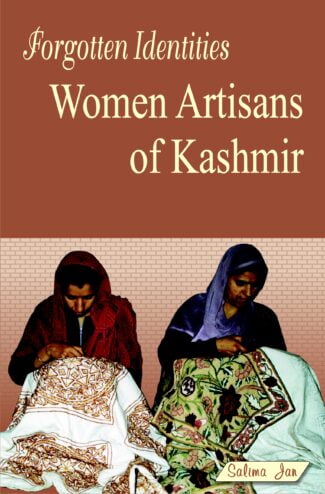
The work examines adoption of handicrafts as an occupation by artisan women of Kashmir to contribute significantly to their families and the society in spite of problems of earning livelihood in a patriarchal society. Based on empirical data, it deals with their socio-economic background, the way they cope with their duties at home and those of their profession, and their aspirations and rights.
The contribution of women to sustenance and survival of cultures and civilization, as such, has assumed new proportions in the last century or so, with women engaging themselves in a range of activities for livelihood in urban centres. Their contributions have, however, largely gone unacknowledged due to various factors. This study attempts to address this aspect by focusing on the role of urban women in the handicrafts sector in Kashmir. Dr. Salima Jan examines how the artisan women, in spite of difficulties of earning livelihood in a patriachal society, have adopted handicraft as a household occupation and are contributing immensely to family and society. Based on empirical data obtained from survey and presenting case studies, the work examines the socio-economic and educational background of artisan women before delving into aspects, such as, the nature of work done by them, their wages in different handicrafts, their control over these and the conditions under which the women have opted for the role. It analyses the manner in which the women cope with their dual roles involvement in household chores as well as employment in handicrafts and deals with their individual aspirations and rights in this context i.e., their say in decision-making in families and their perceptions of job satisfaction and changing role of women. This research effort would be useful to researchers and scholars engaged in a range of sociological disciplines but, particularly, associated with sociology of work and gender studies.
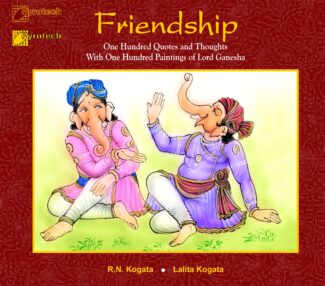
True friendship in a cohesive force and its virtues are many. It not only brings the people closer and knits the society into a caring unit but also stimulates trust beyond the boundaries. This in what the quotes contained in this work with objective art justify for illuminating minds towards unification of the mankind.
True friendship in a cohesive force and its virtues are many. It not only brings the people closer and knits the society into a caring unit but also stimulates trust beyond the boundaries. This in what the quotes contained in this work with objective art justify for illuminating minds towards unification of the mankind.
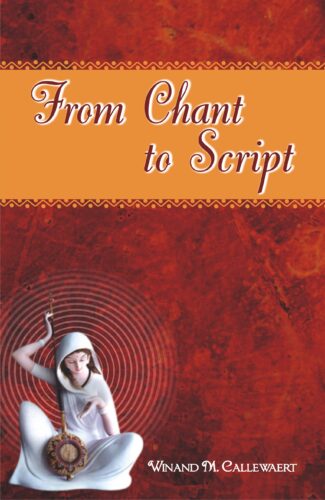
This book is an omnibus of eleven thoroughly revised articles on Nirguna Bhakti, published in the 1970s and 1980s. In order to complete the overall view of the author’s research on Nirguna Bhakti, this volume is appended with a summary of nine books published during 1989-2009.
Callewaert started to publish long before the computer age, in 1974. He sent his PhD dissertation to the press typed on paper and then revised three typeset proofs. In 2009, he sent his most recent publication to the publisher on a memory stick: 2,187 pages. Many of the early articles, especially those of the pre-computer age, may no longer be easily available and for that reason eleven articles were selected and thoroughly revised for this publication (pp. 3-169). The research career of Callewaert was at the beginning strongly inspired by F. Camille Bulcke (Ranchi) and Charlotte Vaudeville (Paris). He followed their advice and worked mainly on manuscripts with Nirguna Bhakti literature, preparing critical editions and English translations. In order to complete the overall view of this research in that area, in this book are further given a summary of nine books published in the period 19892009 (pp. 171-216) and a summary of eight articles (19962011, pp. 217-44).
During his career he has photographed many manuscripts now threatened with destruction (the result is now digitized in the University of Heidelberg Library); he has prepared critical editions and translations in collaboration with several outstanding colleagues, and he realized how wrong he was in 1971 when defining his research future: to copy as many manuscripts as possible and to reconstruct the archetype, of the original Kabir and others, after a stemmatic comparison of the manuscripts. For, scribes committed errors, intentionally or unknowingly, and variant readings, Callewaert thought, should enable a researcher to establish the relationship between the manuscripts. What eventually turned out to be a wrong methodology became a very exciting adventure, when Callewaert started to discover the singers in the manuscripts. This evolution too is discussed in the present volume, From Chant to Script.
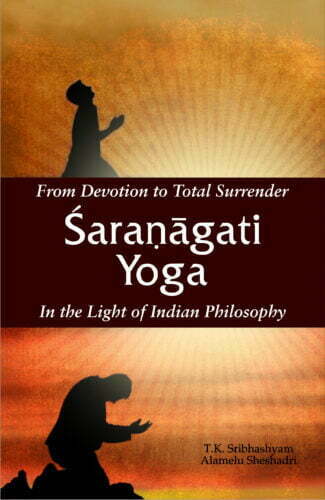
The book is an in-depth study of the origin of bhakti as expounded in ancient scriptures including the Vedas. While the emphasis is on RÀmÀnujas understanding of the Absolute, it explores the bhakti devotion in aivism and throws ample light on mans need for devotion without religious convictions.
The volume is a comprehensive work on bhakti yoga or bhakti marga, seen as the direct path to perfection, the principal means to the progressive perfection of the soul.
The book begins with a detailed study of the origin of bhakti in the Vedas and its understanding in the Brahmanas, Aranyakas, the Upanishads and the Puranas, and other works. It attempts to approach bhakti as a representation of God in the created world and devotion without religious convictions. It throws light on man’s need to develop such devotion through absolute self-surrender to God. The bhakti concept in Vedanta is explored in-depth by referring to Vedanta schools of Adi Shankara, Bhaskara Bhatta, Ramanuja, Caitanya Mahaprabhu, the Alvar Saints of south India and the concept of devotion of Andal. Quoting from the thoughts of diverse bhakti saints of India, it explores the bhakti devotion in Shaivism referring to Shiva as the Supreme God and the concept of Shakti, aspects relating to moral responsibilities, bondage and liberation, and the doctrine of Shatstha. The emphasis is on Ramanujas teachings on bhakti: his understanding of the Absolute, jnana and consciousness, jiva and atma, time and spiritual consciousness. There is a chapter that provides a practical approach to bhakti thought, for instance, ways of developing consciousness of it and non-meditative forms of bhakti.

The book is an in-depth study of the origin of bhakti as expounded in ancient scriptures including the Vedas. While the emphasis is on RÀmÀnujas understanding of the Absolute, it explores the bhakti devotion in aivism and throws ample light on mans need for devotion without religious convictions.
The volume is a comprehensive work on bhakti yoga or bhakti marga, seen as the direct path to perfection, the principal means to the progressive perfection of the soul.
The book begins with a detailed study of the origin of bhakti in the Vedas and its understanding in the Brahmanas, Aranyakas, the Upanishads and the Puranas, and other works. It attempts to approach bhakti as a representation of God in the created world and devotion without religious convictions. It throws light on man’s need to develop such devotion through absolute self-surrender to God. The bhakti concept in Vedanta is explored in-depth by referring to Vedanta schools of Adi Shankara, Bhaskara Bhatta, Ramanuja, Caitanya Mahaprabhu, the Alvar Saints of south India and the concept of devotion of Andal. Quoting from the thoughts of diverse bhakti saints of India, it explores the bhakti devotion in Shaivism referring to Shiva as the Supreme God and the concept of Shakti, aspects relating to moral responsibilities, bondage and liberation, and the doctrine of Shatstha. The emphasis is on Ramanujas teachings on bhakti: his understanding of the Absolute, jnana and consciousness, jiva and atma, time and spiritual consciousness. There is a chapter that provides a practical approach to bhakti thought, for instance, ways of developing consciousness of it and non-meditative forms of bhakti.
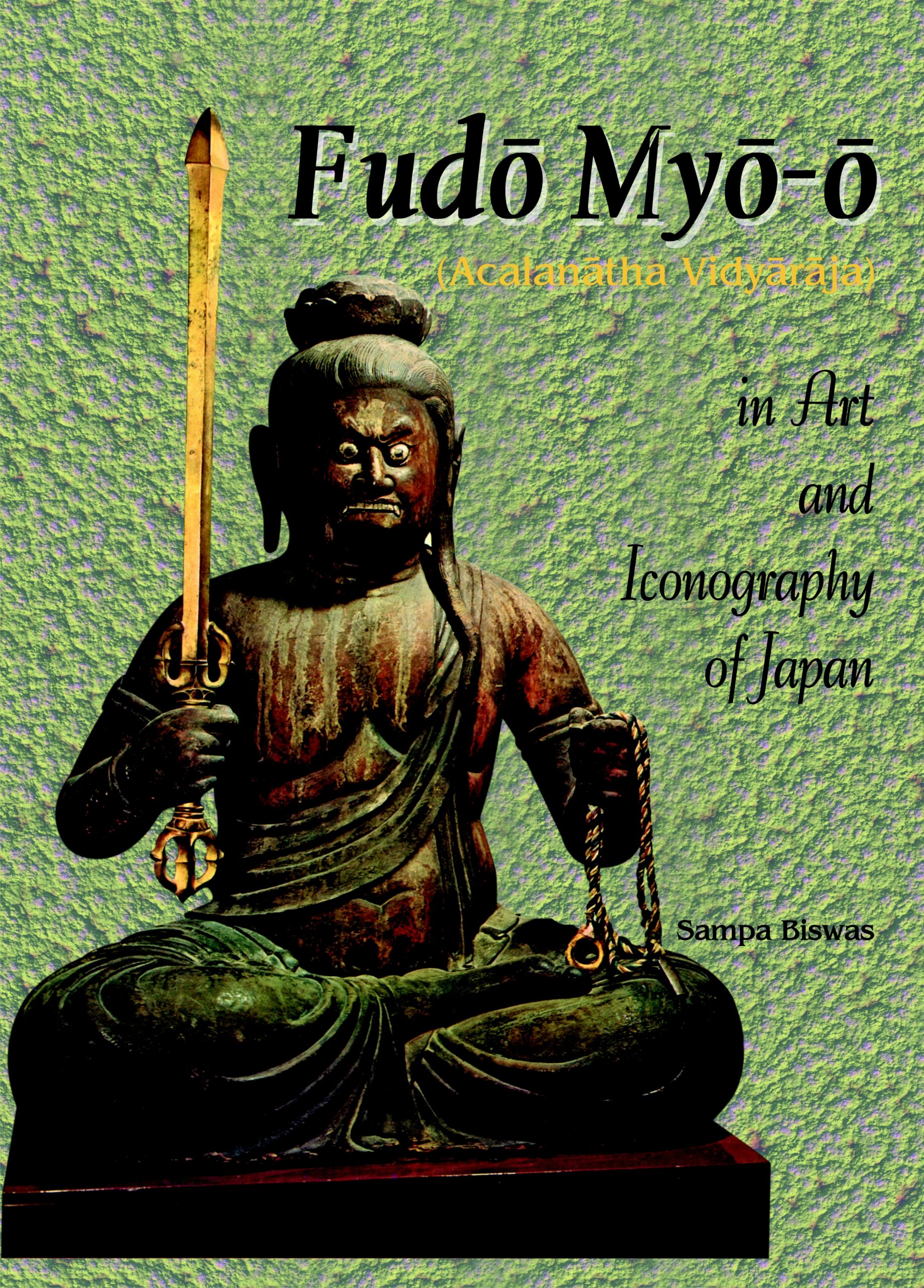
The book discusses the introduction of Buddhism in Japan and its gradual transformation in esoteric doctrines. It also describes Fudo’s iconography, symbolic instruments, mudras, attendants, etc. This work describes the remarkable sculptures, paintings and woodblock prints of Fudo from Heian period.
Shingon Buddhism — esoteric Buddhism brought to Japan from China during the early ninth century — inspired a new spiritual energy that found expression in varied forms, especially in art and iconography. A radical change occurred with the introduction of new deities, among them the Five Great Kings, the most important of them being Fudo Myo-o, the conqueror of all disasters and evil. This book is a study of the concept, iconography and decoction of Fudo in art.
Beginning with a detailed account of the origin of Buddhism and its introduction into Japan, the book focuses on development of esoteric Buddhism in the country. It delves into the uniqueness of Shingon Buddhism rituals which try to evoke the vitality of the three mysteries in the body, speech and thought, the mysteries being transmitted orally from the master to the disciple. Describing Fudo Myo-o as discussed in Buddhist literary sources from India, it takes up his visual representation in painting and sculpture. It discusses the representation of his attendants in art and iconography, symbolic instruments associated with the god in his depiction and interpretations of the mudras (hand gestures, postures, emblems) carried by Fudo. It explains the esoteric meaning attached to various ideas and concepts represented in the visual images.
Supported by numerous illustrations, this detailed and thorough study would enthral students and scholars of Buddhist art and iconography.

One of the earliest authoritative works by a famous Western scholar, on the fundamental aspects of Hinduism, its beliefs, philosophy and practice. It also discusses critically the Vedic and Upaniùadic literature and philosophy, central doctrines, traditions and pilgrim centres.
The book is one of the earliest authoritative works on the fundamental nature of Hinduism, authored by a noted Western scholar, Sir Monier Monier-Williams. The scholarly work deals with the fundamental aspects of Hinduism: the nature of its beliefs, philosophy and practice. It provides precious details on the principal works of Hinduism: the Vedas, the Upanishads and the Dharmashastras. It discusses the essence of the Vedic hymns, the Brahmanas and the sacrificial system, the Upanishadic philosophy, the doctrine of triple manifestations, and the development of sectarian beliefs Shaivism, Vaisnavism and later Shaktism. The in-depth study delves objectively into the major concepts and doctrines associated with Hinduism, such as, the doctrine of incarnation, doctrine of devotion and idol-worship as well as the caste system. It presents a discussion on the famous places held sacred by the Hindus which are the major centres of pilgrimage: the city of Benares, Allahabad, Gaya, Nashik and Haridwar, among others.
| There are no products |